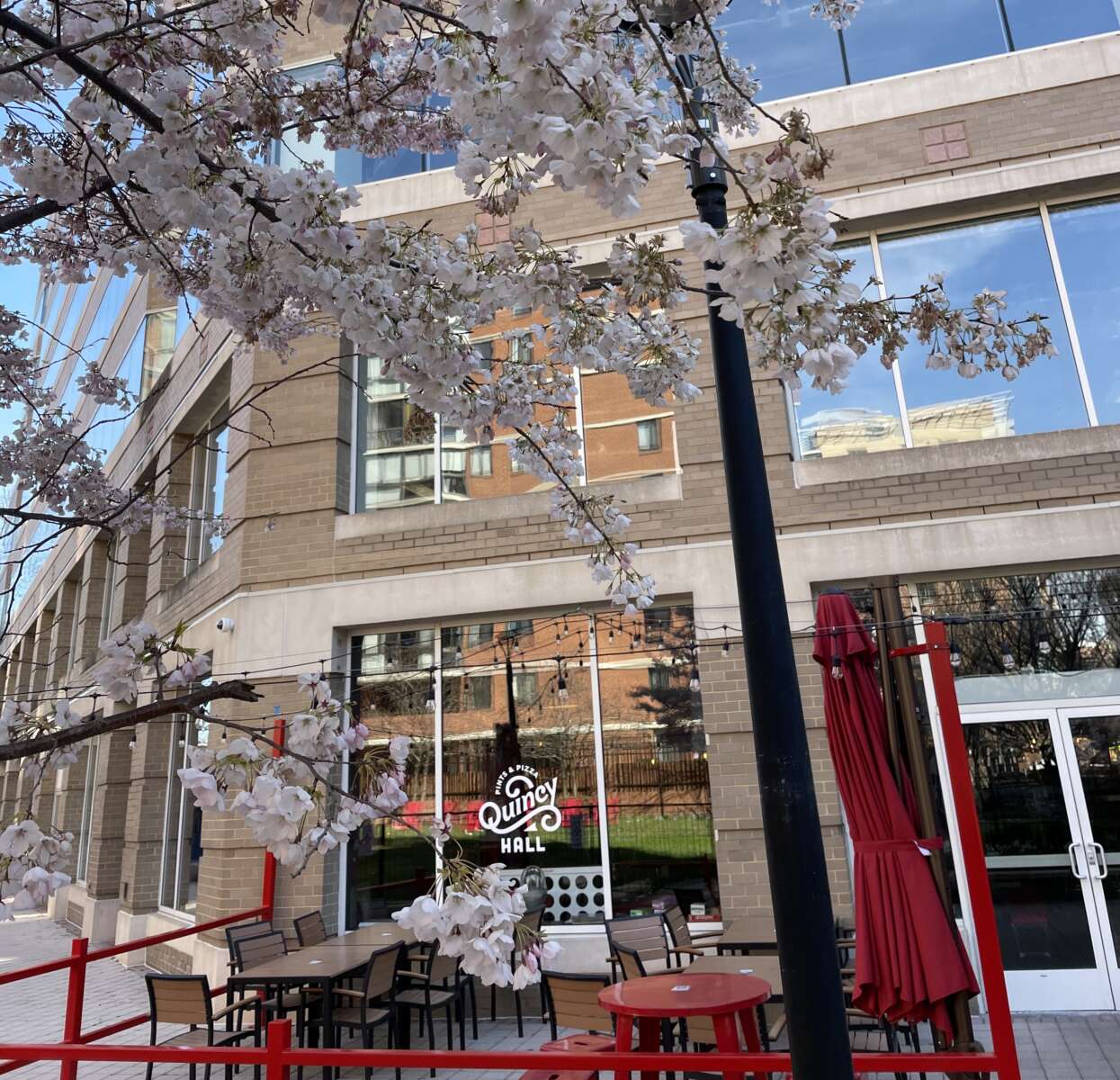Quincy Hall Teeth

Quincy Hall, a historic building in Boston, Massachusetts, is known for its distinctive architectural features, particularly its prominent teeth-like structures that adorn the facade. These structures, often referred to as “Quincy Hall Teeth,” have become a recognizable symbol of the building and have sparked curiosity and debate among historians and architects.
A Historical Perspective on Quincy Hall
Quincy Hall was constructed in 1825-1826 as a market hall and served as a bustling center for commerce and trade in Boston for over a century. Designed by renowned architect Isaiah Rogers, the building was a testament to the architectural innovations of the early 19th century. The building’s unique design, featuring a grand central hall and numerous smaller shops and stalls, reflected the city’s growing commercial importance.
The Architectural Significance of the Teeth
The Quincy Hall Teeth are a series of decorative elements that project from the building’s facade, resembling a row of teeth. These structures are made of cast iron and were originally painted a bright white. The teeth are arranged in a symmetrical pattern, with larger teeth flanking the building’s main entrance and smaller teeth spaced evenly along the facade.
The Historical Context of the Teeth
The origin and purpose of the Quincy Hall Teeth have been a subject of speculation. Some historians believe that the teeth were intended to represent the city’s burgeoning commercial power and its role as a major trading center. Others suggest that the teeth were simply a decorative element chosen for their visual appeal.
Comparisons with Similar Architectural Features
The Quincy Hall Teeth are not unique in their resemblance to teeth. Similar architectural features, known as “tooth ornaments” or “dental moldings,” can be found on buildings in other cities, including London, Paris, and New York. These features often appear on buildings constructed during the 19th century and are typically associated with commercial or industrial architecture.
The Architectural Design and Purpose of the Quincy Hall Teeth

Quincy Hall, a prominent landmark in Boston, Massachusetts, is known for its unique architectural features, including the enigmatic “teeth” that adorn its facade. These protruding stone elements have captivated the imagination of onlookers for centuries, sparking numerous theories about their intended purpose. This section delves into the architectural style of Quincy Hall, the materials used in constructing the teeth, and explores the potential functions they served.
Architectural Style and Influence
Quincy Hall, constructed in 1825, embodies the architectural style of Greek Revival, a prominent movement in American architecture during the early 19th century. This style drew inspiration from classical Greek architecture, characterized by its emphasis on symmetry, proportion, and the use of classical motifs. The building’s facade, with its symmetrical design, fluted columns, and triangular pediment, exemplifies the hallmarks of Greek Revival. The Quincy Hall teeth, though unique, align with this architectural style, showcasing a blend of classical elements with an intriguing twist.
Materials and Durability, Quincy hall teeth
The Quincy Hall teeth are crafted from granite, a durable and resilient stone that was commonly used in construction during the 19th century. Granite’s inherent strength and resistance to weathering ensured the longevity of the teeth, allowing them to withstand the test of time and the elements. The use of granite in their construction reflects the architectural sensibilities of the period, which prioritized materials that would endure and contribute to the building’s enduring presence.
Theories Regarding the Function of the Quincy Hall Teeth
The intended purpose of the Quincy Hall teeth remains a subject of debate among historians and architectural enthusiasts. While their exact function is unclear, several theories have been proposed, each offering a plausible explanation for their existence. The following table summarizes some of the most prominent theories:
| Theory | Description |
|---|---|
| Aesthetic Enhancement | The teeth were purely decorative, adding visual interest and architectural complexity to the facade. Their unique shape and placement contribute to the building’s distinctive character. |
| Structural Support | The teeth might have served a structural purpose, reinforcing the facade or providing additional support for the building’s weight. Their placement suggests they could have acted as buttresses, strengthening the walls. |
| Symbolic Representation | The teeth might have held symbolic significance, representing the building’s function as a marketplace or its association with commerce and trade. The teeth could have been a visual metaphor for the city’s growth and prosperity. |
| Practical Function | The teeth could have served a practical purpose, such as providing ventilation or acting as drainage channels for rainwater. Their placement and shape suggest they might have facilitated airflow or directed water away from the building. |
The Cultural and Social Impact of the Quincy Hall Teeth

The Quincy Hall Teeth, a collection of human teeth purportedly extracted from the mouths of executed criminals, have captivated the public imagination for centuries. Beyond their macabre nature, these teeth played a significant role in shaping local culture and social perceptions in the 19th century.
The Quincy Hall Teeth and Local Folklore
The teeth’s association with criminal justice and the morbid fascination they inspired fueled the creation of local folklore. The teeth were often attributed with mystical powers, such as the ability to bring good luck or ward off evil spirits. These beliefs were widely circulated through oral traditions, contributing to the teeth’s notoriety and mystique.
“The teeth were said to be able to bring good luck to those who possessed them.”
The teeth also became a popular topic of conversation and storytelling, with numerous anecdotes and legends surrounding their origins and purported powers.
The Quincy Hall Teeth and Public Perception
The teeth’s popularity reflected the Victorian era’s fascination with the macabre and the morbid. They served as a reminder of the harsh realities of crime and punishment, and their association with executed criminals fueled public anxieties about crime and social order.
The display of the teeth in Quincy Hall further fueled public interest and contributed to their notoriety. The teeth became a symbol of the city’s dark past and a reminder of the consequences of criminal activity.
“The teeth were a reminder of the harsh realities of crime and punishment in the 19th century.”
Timeline of the Quincy Hall Teeth’s Cultural Impact
- 1800s: The teeth are collected and displayed in Quincy Hall, becoming a popular attraction for locals and visitors alike.
- Mid-19th Century: The teeth’s association with criminal justice and the morbid fascination they inspired fuel the creation of local folklore.
- Late 19th Century: The teeth’s popularity wanes as public interest in the macabre declines.
- 20th Century: The teeth are eventually removed from Quincy Hall and their whereabouts remain unknown.
The Quincy Hall Teeth’s cultural and social impact extended beyond their immediate context. Their notoriety and association with crime and punishment influenced public perception of justice and social order in the 19th century. The teeth’s legacy continues to fascinate and intrigue people today, serving as a reminder of the enduring power of folklore and the human fascination with the macabre.
Quincy hall teeth – Quincy Hall, a historic building with a rich past, is known for its unique architectural details. One of the most intriguing aspects is the question of whether or not the building has metal teeth, a feature often associated with its imposing facade.
To uncover the truth behind this intriguing detail, explore the article does quincy hall have metal teeth , which delves into the secrets of this historic structure. Regardless of the answer, the mystery surrounding Quincy Hall’s teeth adds to its captivating character.
Quincy Hall’s teeth are a testament to his athletic prowess, showcasing the wear and tear of a lifetime dedicated to pushing the limits of human performance. Just like the legendary wayde van niekerk , who redefined the 400m race with his record-breaking run, Quincy Hall’s teeth serve as a tangible reminder of his dedication to the sport.
While Van Niekerk’s record is a testament to his speed and endurance, Quincy Hall’s teeth symbolize the physical demands of his chosen path, a path that has etched its mark on his body, much like a sculptor’s chisel leaves its mark on a block of marble.